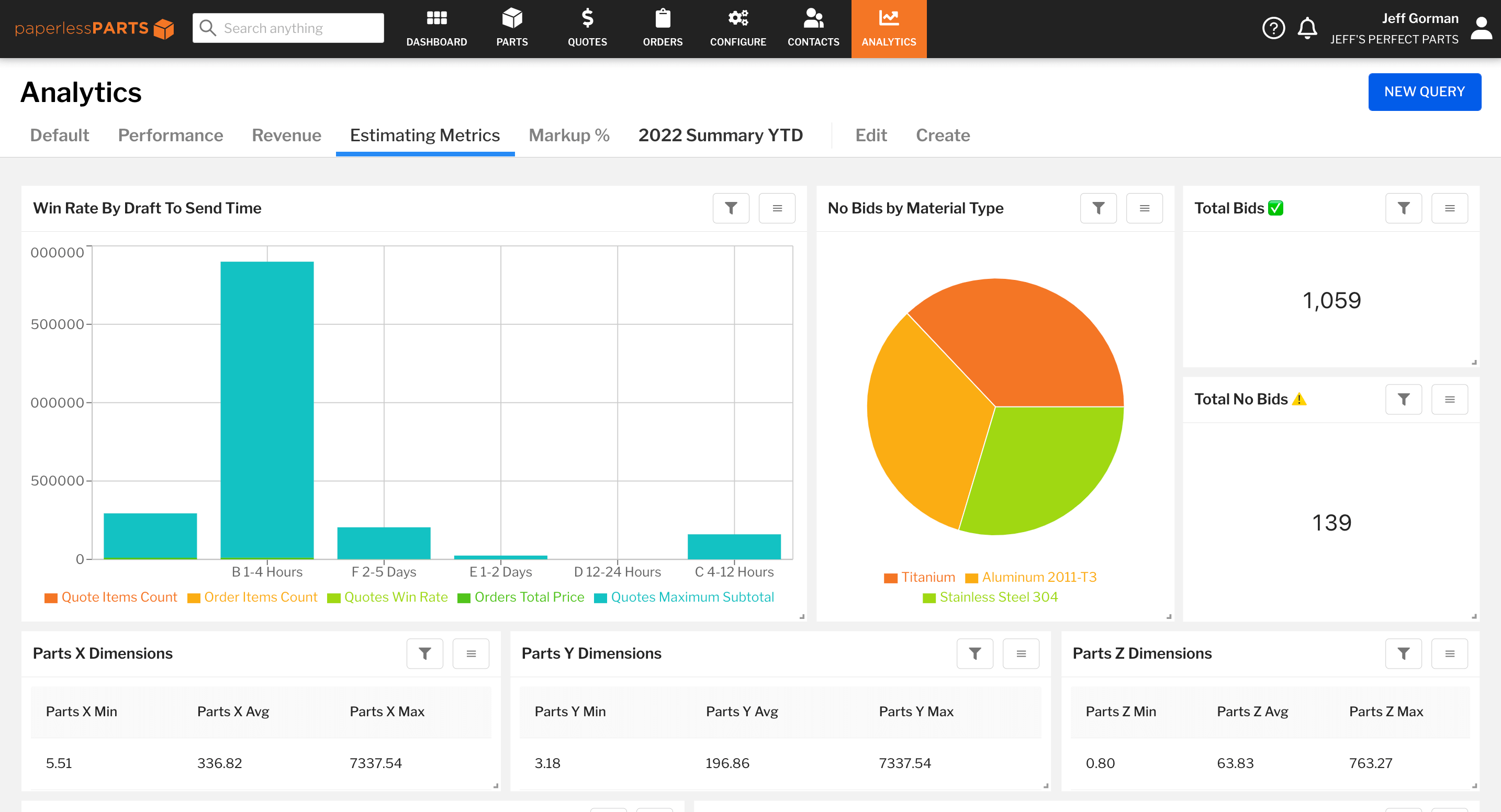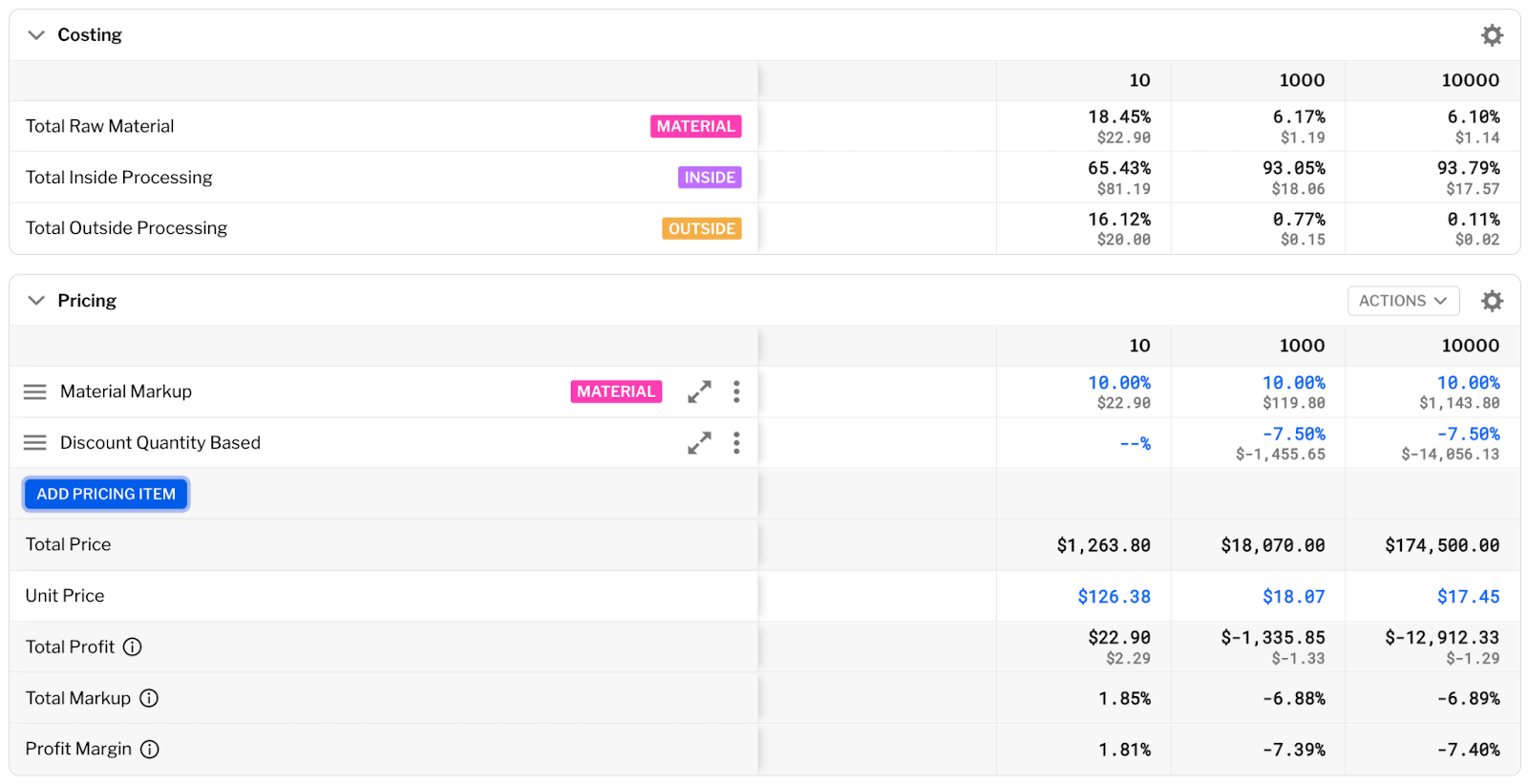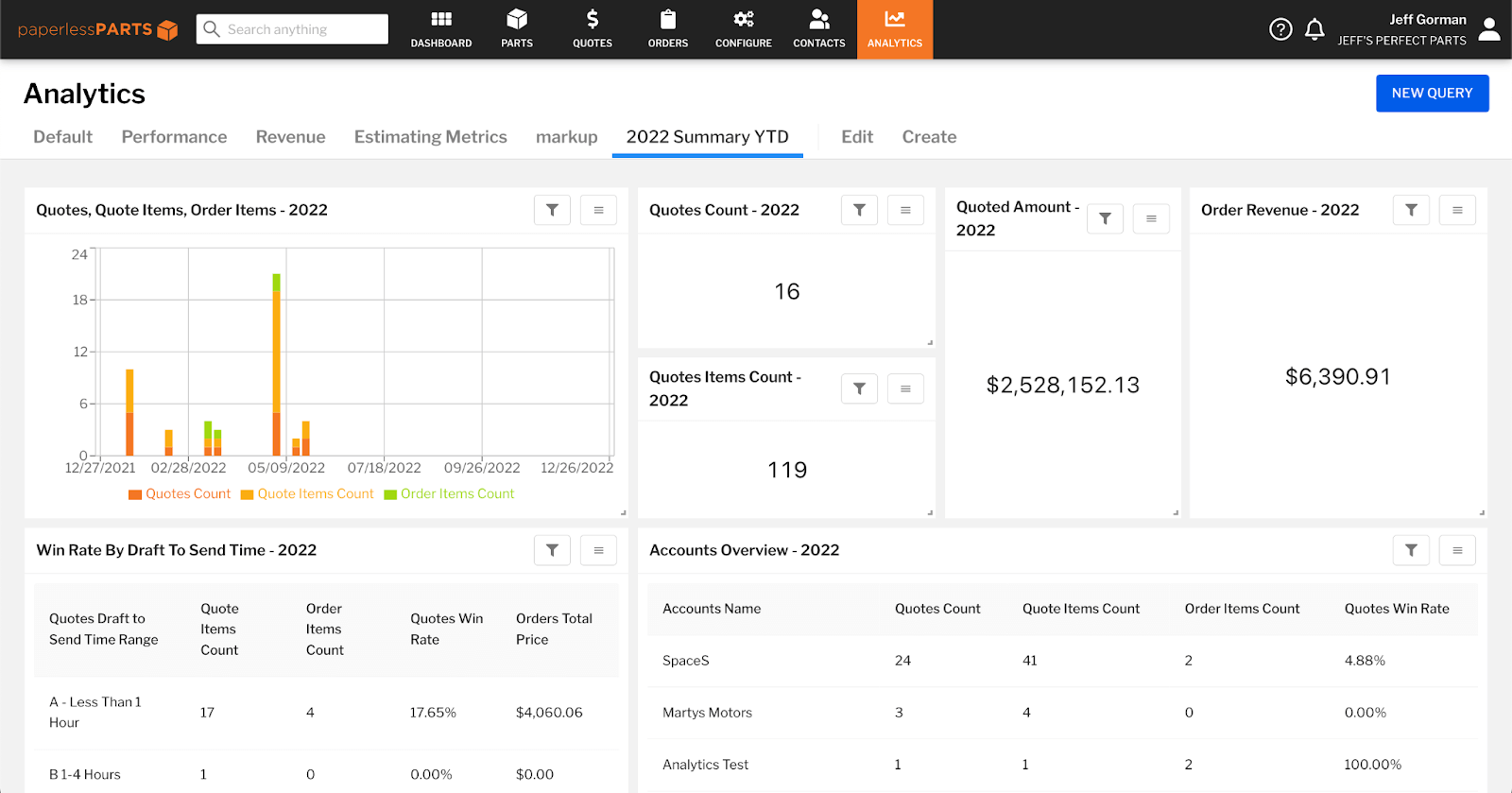
Driving Shop Revenue with Data-Based Decisions
Data goes into every choice we make as humans; we constantly use intuition, the opinions of others, and past experiences to inform our decisions.
But what happens when we rely solely on subjective information to drive business decisions? How can we defend our choices when someone inevitably asks, “What data are you basing this on?”
Data-Driven Decision Making (DDDM) is centered around hard, structured data as opposed to subjective opinions. And with the dawn of Industry 4.0, we’ve seen technology that better captures data become increasingly accessible. This has allowed shops of all sizes across the country to collect more data than ever before – whether they’re intentionally capturing it or not.
If you found out your win rate on titanium was 4%, would you ever spend time quoting titanium again? Would you invest time and resources into improving your win rate? Hard data can help steer you in the right direction.
Here are 5 steps for leveraging your shop’s data to drive better business decisions and increase your revenue:
1. Establish your shop’s objectives.
Any decision you make has to start with your shop’s goals in mind. Start by thinking about the biggest challenges in your shop right now: Spending too much time quoting? Lead times too long? Win rate declining?
Let’s say your no-quote rate is increasing. The first step is to uncover why that’s happening. Then, set a goal around turning away fewer RFQs. Do you need to purchase new equipment or seek out new vendors in order to bid on more requests? In the long run, these objectives can lead to stronger buyer relationships and increased win rates.
2. Identify and collect relevant data.
Now that you’ve identified a goal, it’s time to start collecting data to create baseline measurements. These can be used to assess progress against that goal.

Data can be found everywhere:
- ERP systems
- CRM software
- Feedback from employees and customers
- Business intelligence systems
- Estimating/sales tools
But not all data is valuable for the decision you are trying to make; the key is to identify and collect the most relevant and actionable data.
For the scenario above where our goal is to “turn away fewer RFQs and ultimately strengthen partnerships with our buyers,” some valuable data queries may be:
- How many RFQs do we receive in a certain time period?
- How many RFQs do we no-bid in that time period?
- What percentage of bids are from first-time vs. repeat buyers?
- What type of work am I no-quoting? Is it specific characteristics? Certain finishes?
- What is the total potential value for those bids I no-quoted?
3. Draw a hypothesis from that data.
Sit down with your team and take a look at the data you have collected. Be sure to loop folks from all corners of your business into this stage, as everyone will have their own unique lens to identify outliers, patterns, and trends based on their responsibilities.
Upon unpacking the data, let’s say you are able to come to the following realizations:
- We receive around 50 RFQs per month
- We no-bid about 5 requests per month (10%)
- About 85% of our RFQs are from repeat buyers and the rest are from first-time buyers. BUT we no-quote first-time buyers more than repeat buyers
- The bulk of the work we are no-quoting is not in our wheelhouse because a process we don’t have in-house capabilities for – say, Wire EDM – is required to make most of these parts we no-bid
- The total potential revenue of the no-quoted work was around $50,000/month
Using the data above as a vehicle, we can make the following hypothesis:
“If we can win 30% (our average win rate) of the work we are currently no-quoting, that would equate to roughly $180,000 in additional revenue per year ($50,000/month x 30% win rate x 12 months). A Wire EDM machine costs around $500,000 and has a 5-year life span. If we can purchase a Wire EDM machine, we can cover the annual costs, increase our revenue by $180,000, increase our bottom line, and potentially win over more repeat customers.”
4. Strategize and go.
Now that you’ve identified a goal, collected relevant data, and made the hypothesis that buying a Wire EDM machine will lead to an increase in revenue of $180,000,” it’s time to strategize and put a plan in place.
The goal at this stage is to clearly define the next steps: When will you buy that machine? How much more work will you quote and win as a result? Anyone should be able to read over your plan and point to whether or not the goal was achieved. For example:
“We will buy and configure a Wire EDM machine by X date, and as a result, we will bid on $50,000+ worth of work per month that we would have otherwise had to pass on. As a result, we expect to win 30% of previously no-quoted opportunities, leading to a $180,000 per year increase in revenue. We also expect this to earn us additional repeat customers.”
5. Rinse and repeat.
Remember to “inspect what you expect.” Now that you’ve developed a plan and put it in place, it’s critical to repeat the steps above in order to validate your hypothesis and ensure the decision made is yielding the desired results.
You want to be sure you are collecting more data points that will help validate your decisions. Without doing this, you will have no foundation to assist your efforts and take corrective actions: What if that machine isn’t running all of the time now that you bought it, and you aren’t winning as many of the previously no-quoted bids as you thought? Do you need to market your new capabilities more? Are you estimating the costs to run the new equipment higher than your competition? As you continue to make one data-driven decision after the next, you will find new ways to improve that may not have been a part of your original strategy.
Having the Right Systems in Place
If you find that you’re quoting out of spreadsheets and handling your communications via email and phone, it may be difficult to collect valuable information in a format that enables your team to make Data-Driven Decisions.

An example of a Paperless Parts Analytics dashboard.
Paperless Parts is a tool that enables manufacturers to capture and communicate information throughout the entire quote-to-cash cycle. It allows you to capture and aggregate information about your buyers, estimate metrics, securely send and view files, communicate across your team and with vendors, and much more.
Whether you’ve intentionally collected it or not, the data is already there – it’s up to you to follow these best practices so you can harness its power and drive revenue for your shop.
—
Learn how to drive revenue at your shop today using “offensive” and “defensive” pricing strategies in our Job Shop Pricing Playbook.
—
Since beginning his career at Paperless Parts, Jeff Gorman has worked as a Support Specialist, Support Engineer, and now Senior Customer Success Manager. When he’s not leveraging data to improve Paperless Parts or helping customers make data-driven decisions, he’s recording his podcast series on pricing best practices with Paperless Parts Co-founder Jay Jacobs via The Job Shop Show. Jeff resides in Arlington, MA and loves to golf in his free time.


